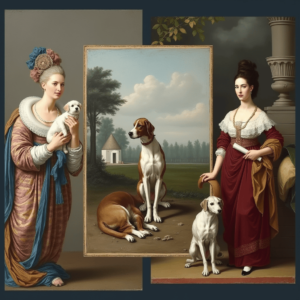Animal symbolism has been a cornerstone of human expression for millennia, weaving its way through ancient myths, religious texts, and folklore. From the wise owl in Greek mythology to the sacred cows of Hinduism, animals have long served as powerful metaphors for human traits, societal values, and spiritual beliefs. But how has this symbolism evolved in today’s fast-paced, digitally driven world? Modern creators—whether authors, artists, or filmmakers—continue to harness animal symbolism, but with fresh layers of meaning that reflect contemporary struggles, identities, and cultural shifts.
In this exploration, we’ll uncover how animal symbolism breathes life into modern literature, visual art, and pop culture, offering new perspectives on timeless themes. Whether it’s a rebellious fox in a dystopian novel, a viral meme featuring a philosophical raccoon, or a brand logo that subtly evokes primal instincts, animals remain a dynamic storytelling tool. By examining these creative interpretations, we can better understand why animal symbolism still captivates us
1. The Evolution of Animal Symbolism in Modern Times
From Ancient Myths to Contemporary Meanings
Brief History of Animal Symbolism
Animal symbolism dates back to prehistoric cave paintings, where early humans depicted bison, horses, and lions as spiritual totems. Ancient civilizations—Egyptians with their cat-headed goddess Bastet, Native American tribes with spirit animals, and Chinese zodiac signs—used animals to represent divine forces, moral lessons, and societal hierarchies. In medieval Europe, bestiaries assigned religious meanings to creatures (e.g., the pelican as a Christ-like sacrifice). These traditions laid the groundwork for animals as narrative shorthand for human experiences.

How Interpretations Have Shifted
Today, animal symbolism is less about rigid archetypes and more about fluid, context-driven meanings. While a wolf once universally symbolized danger in folklore, modern stories like The Jungle Book or Game of Thrones recast wolves as loyalty or untamed freedom. Similarly, serpents—once biblical villains—now appear in eco-conscious art as symbols of rebirth (e.g., Kaa in Rudyard Kipling’s reinterpretations). Technology and globalization have further diversified interpretations: a fox can be a cunning trickster (Fantastic Mr. Fox) or a corporate mascot (Firefox), reflecting society’s evolving values.
Why Animals Still Resonate in Modern Storytelling
Psychological and Cultural Reasons
Animals tap into primal instincts and collective unconsciousness, as Carl Jung’s archetypes suggest. They evoke immediate emotional responses—think of a dove’s peace or a shark’s menace—bypassing language barriers. Culturally, animals serve as bridges between tradition and modernity; for example, Disney’s Zootopia uses predator-prey dynamics to discuss racism, making abstract issues visceral.
Universality of Animal Archetypes
From Aesop’s fables to Black Mirror’s robotic bees, animal symbolism endures because it’s adaptable. A raven might symbolize death (Edgar Allan Poe) or wit (Neil Gaiman’s Sandman), proving these motifs are storytelling Swiss Army knives. Social media amplifies this: viral videos of “heroic dogs” or “introverted owls” reinforce animal personas as mirrors for human behavior.
2. Animal Symbolism in Contemporary Literature
Metaphorical Animals in Modern Fiction
- Life of Pi (Tiger as Survival): Yann Martel’s tiger, Richard Parker, embodies primal instinct and the will to survive, blurring the line between reality and metaphor.
- The Goldfinch (Bird as Fragility): Donna Tartt’s titular painting symbolizes fleeting beauty and the protagonist’s trapped psyche, echoing the caged bird trope in art history.
Animal Allegories in Young Adult & Fantasy
- Harry Potter (Patronus Animals): Each character’s spirit guardian (a stag for Harry, an otter for Hermione) reflects their inner strengths, merging medieval symbolism with personal identity.
- His Dark Materials (Daemons as Souls): Philip Pullman’s shape-shifting animal companions externalize human vulnerability, with final forms revealing true nature (e.g., a pine marten for fierce loyalty).
3. Animal Motifs in Visual Art & Design
Symbolic Animals in Street Art & Murals
- Banksy’s Rats: These graffiti rodents critique societal pests—corruption, consumerism—while echoing medieval plague imagery with a rebellious twist.
- KAWS’s Companion: The hollow-eyed Mickey-esque figure, often slumped in despair, mirrors modern alienation, transforming a corporate icon into a vulnerable everyman.
Animal Logos & Brand Symbolism
- Nike’s Swoosh: Inspired by the wing of the Greek goddess Nike, it merges victory (eagle-like dominance) with motion, appealing to athletic aspiration.
- Twitter’s Bird: Named “Larry” after NBA star Larry Bird, it embodies freedom of expression—a digital-age carrier pigeon stripped of traditional peace connotations for viral chatter.

4. Animal Symbolism in Pop Culture & Media
Iconic Animal Characters in Film & TV
Zootopia (Prejudice and Stereotypes)
Disney’s Zootopia cleverly uses animal species as stand-ins for racial and social biases. Predators and prey coexist uneasily, mirroring real-world tensions around systemic discrimination. Judy Hopps, the determined bunny cop, challenges stereotypes about small, “cute” animals being weak, while Nick Wilde, the sly fox, subverts expectations by revealing his hustling stems from societal prejudice. The film’s brilliance lies in how it makes complex social issues digestible through animal allegory—proving that animal symbolism remains a powerful tool for cultural commentary.
The Lion King (Circle of Life, Leadership)
A modern retelling of Shakespeare’s Hamlet, The Lion King uses African wildlife to explore themes of legacy, responsibility, and redemption. Scar’s hyena followers symbolize outcasts manipulated into serving corrupt power, while Mufasa’s wisdom embodies idealized leadership. The “Circle of Life” concept, visualized through the Pride Lands’ ecosystem, reinforces how animal symbolism can convey philosophical and environmental messages in ways that resonate across generations.
Memes & Viral Animal Symbolism
“Doge” (Humor and Relatability)
The Shiba Inu known as “Doge” became an internet sensation not just for its cute, confused expression, but for how it epitomized online absurdism. Phrases like “such wow” and “very [X]” turned the dog into a blank canvas for millennial and Gen-Z humor—representing everything from existential dread to ironic joy. Doge’s evolution from meme to cryptocurrency mascot (Dogecoin) shows how animal symbolism can morph into cultural and even economic phenomena.
“Grumpy Cat” (Personifying Human Emotions)
With her permanently scowling face, Grumpy Cat (real name Tardar Sauce) became the internet’s go-to symbol for frustration, sarcasm, and relatable discontent. Her fame wasn’t just about her appearance; it was about how she gave people a non-human avatar for shared emotions. In a digital age where feelings are often communicated through visuals, animals like Grumpy Cat serve as emotional shorthand—bridging the gap between human experiences and viral content.
5. The Future of Animal Symbolism in a Digital Age
Virtual & AI-Generated Animal Representations
Digital Pets (Tamagotchi, AI Companions)
From the 90s Tamagotchi craze to today’s AI-powered virtual pets like Replika, humans continue seeking emotional connections with digital animals. These creations tap into nostalgia, companionship needs, and even mental health support (e.g., therapy chatbots with animal avatars). As AI advances, we might see hyper-realistic virtual animals serving as personalized symbols—like a digital spirit guide adapting to its user’s psyche.
NFTs and Crypto-Animals (Bored Ape Yacht Club)
The Bored Ape Yacht Club NFTs turned cartoon primates into status symbols, blending animal symbolism with exclusivity and internet subculture. Each ape’s traits (gold fur, laser eyes) became markers of identity, parodying how humans use animals to signal traits like power or rebellion. As the metaverse grows, expect more crypto-animals to emerge as avatars for digital tribes.
Environmental Messages & Animal Advocacy
Extinction Symbolism in Activism
Artists and activists use imagery of endangered species (polar bears on melting ice, the iconic “Tear Drop” elephant statue) to make climate grief tangible. These symbols distill complex crises into a single, emotional punch—leveraging animal symbolism to spur action.
How Artists Use Endangered Species Imagery
Photographers like Nick Brandt create haunting portraits of wildlife, framing animals as dignified victims of human destruction. Meanwhile, installations like Es Devlin’s “Come Home Again” (featuring extinct species projected on London’s Tate Modern) turn animals into living memorials. Such works ensure animal symbolism evolves into a rallying cry for conservation.
Conclusion
From ancient cave walls to crypto wallets, animal symbolism remains a universal language—adapting to reflect our fears, hopes, and identities. Whether through a meme, a logo, or a dystopian fable, animals help us see ourselves more clearly.
Next time you spot an animal in a movie, ad, or even a tweet, ask: What is it really saying? Share your favorite example of modern animal symbolism in the comments!

